Despite its occultish name, The Tarot Reading is not a cabalistic rite for mystics. It is actually an ingenious theater game for hipster questers who are psyched to play along. To be sure, the trappings of the participatory performance evoke the arcane realms of ritual, invocation, and revelation. But the reality is a spellbinding actor-instigated crowd-pleaser that has achieved certifiable cult status.
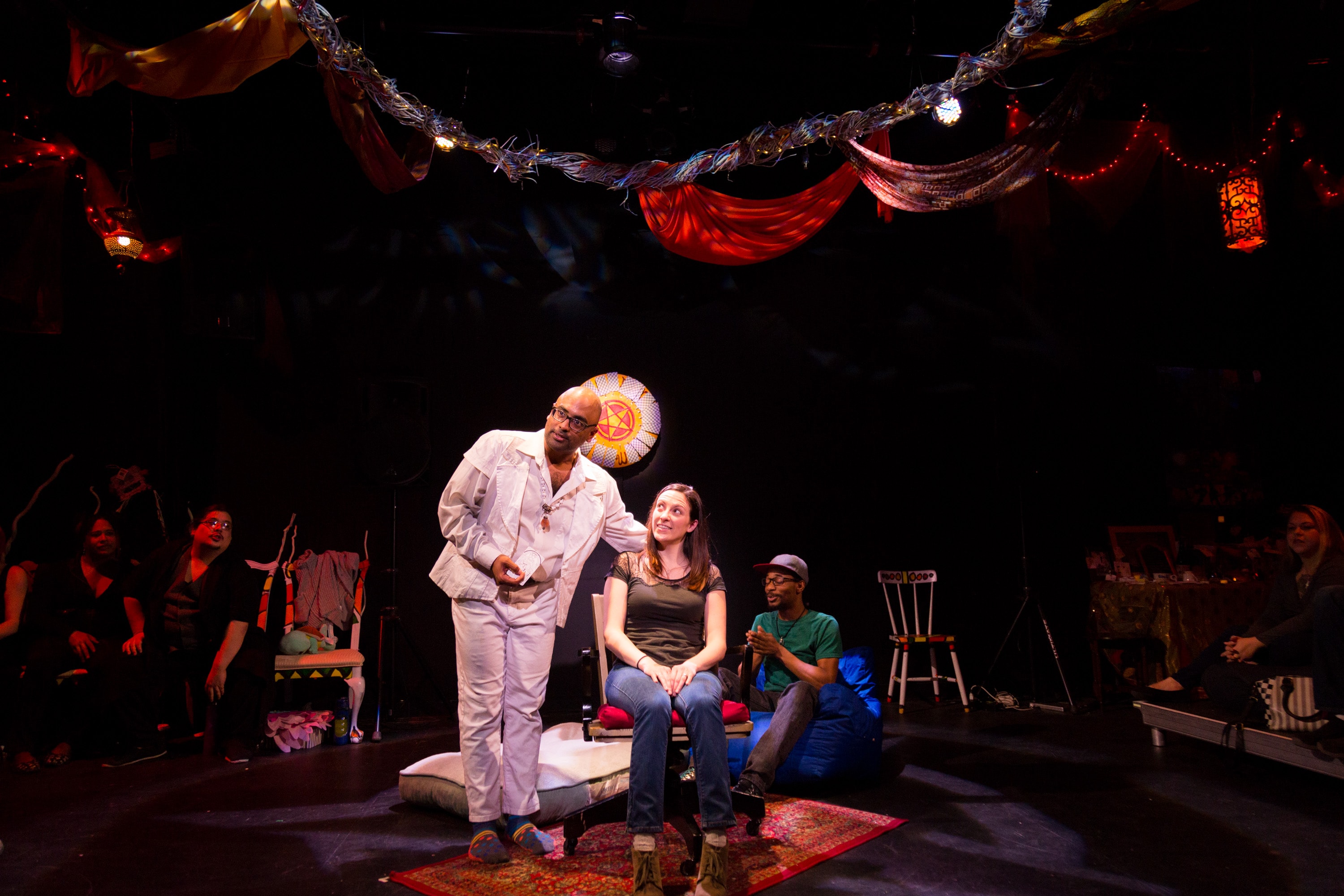
The Tarot Reading began in 2016 and popped up briefly in March and October of 2017. What was to be a run of three shows last weekend sold out so fast a fourth was added. One need not be clairvoyant to foretell there shall be more.
I attended on a “witness” ticket, meaning I watched and enjoyed from the comfort of a rocker, one of the assorted chairs on risers around the stage. Twenty-one folks who had “seeker” tickets had each been given a Tarot card on entry. When their card was drawn, they were summoned from their seat to take part in a personalized “revelation”—basically a playlet for an audience of one, part scripted, part improvised—performed by one of seven “mediums” (Justin J. Bell, Allyson Harkey, Jon Jon Johnson, David S. Kessler, Niusha Nawab, Nyla Rose, and Rebecca Speas).

I attended the first iteration of The Tarot Reading with “seeker” status in October 2016 at the gallery space Studio 1469 in Columbia Heights. So I had some idea what to expect.
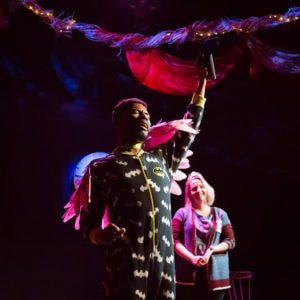
Alan Katz and Quill Nebeker— then as now the “summoners,” or chief deviser-producers—had conceived what seemed a wholly new framework for experiencing live theater. Katz happened also to be my “medium” that night. “The Fool,” then played by Rebecca Speas, seated me in a chair center stage and spun me around to face Katz upstage.
“Hi,” he said, “What’s your name?”
I answered.
Okay, John, let’s play a game. It’s called 30 seconds to Heaven. Here’s the deal. For the purposes of this Revelation, we’re going to pretend you’re dead. We’re sorry for your loss…. You are dead and at the gates of Heaven. Here’s the game: you have 30 seconds to make an argument to me, the gatekeeper, as to why you should get into heaven. You can say anything you want, anything that you think might get you in, as long as you believe it to be true. Then there will be a decision mechanism that will decide whether you get in or you go to, well, the other place….
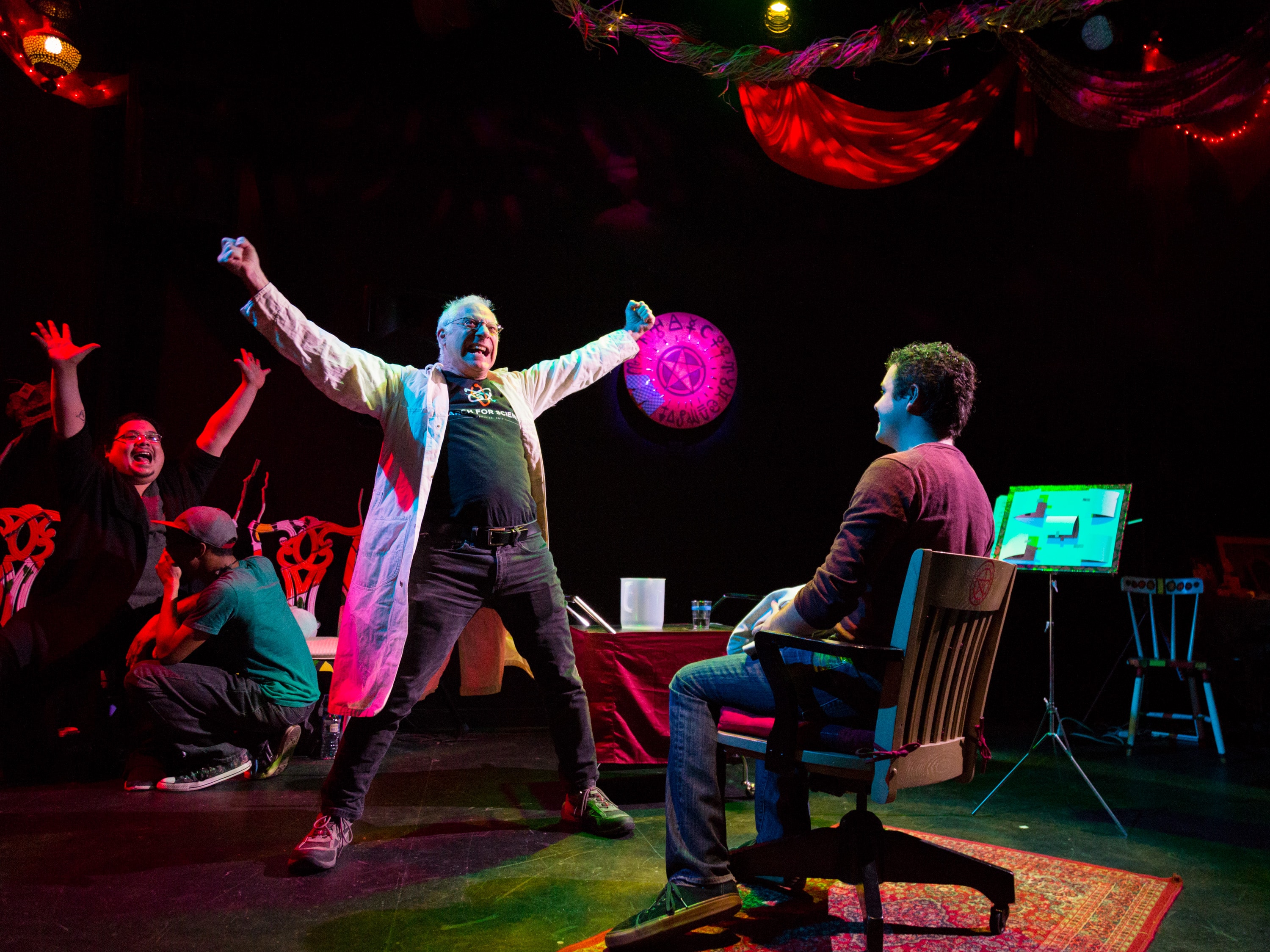
Katz started the “argument timer” and in 30 seconds I pleaded my case. I didn’t make anything up. I said stuff about my commitment to social justice, unspecific but true. Then Katz instructed my jury of stand-in Saint Peters (whom I could not see) to decide my fate by a show of hands. I got voted into Heaven, which weirdly was a relief. I also won a stuffed animal named Pete. Then a bell dinged and the audience broke into a round of applause.
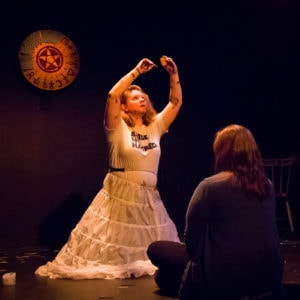
Classical theater is riddled with such setups: You have to choose one of three chests. You have to pass such and such a test. You have to decide between this path and that other path. You must wager for your life. Cleverly culling and retooling the master plot concept, Nebeker and Katz—along with “head of transfiguration” Joan Cummins—oversee selection, rehearsal, and staging of the twenty-one game-based episodes.

The Tarot Reading (IV) had advanced greatly terms of stagecraft and conceptual richness since the first I saw a year and a half ago. Production Designer Mary Keegan had festooned the ceiling with strings of lights and coiled swaths of color and had given each of the episodes dramatic stage lighting. Some also had sound designs by navi and Niusha Nawab.
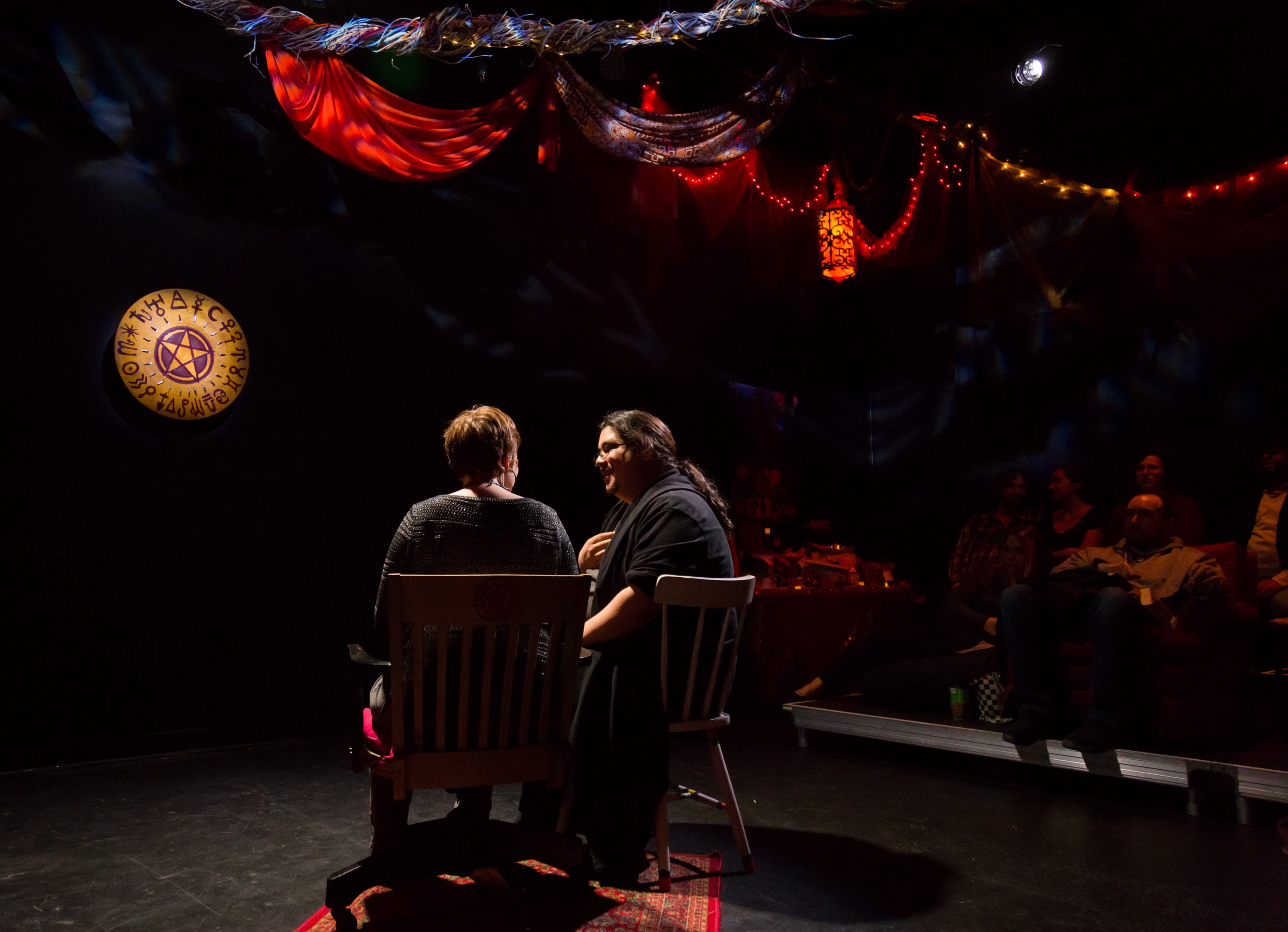
Because the rituals are semi-scripted, one is likely to hear epigrammatic lines that tenderly transcend the entertaining game being played. For instance: In the ritual for The Chariot card, Nawab says, “The victory is not in reaching the destination but it’s in finding the path.” In the ritual for The Emperor card, which featured a comic nerf-gun shootout and a content warning for “gun violence,” Speas says, “You don’t need a badge to be good, and you don’t need a gun to feel powerful.” And in the ritual for The Sick Man card, which contained a content warning for “chronic pain,” Kessler says, “I don’t regret what I can’t do anymore. I cherish what I did once.”
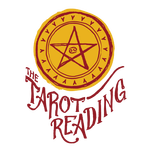
The Tarot Reading (IV) played March 9, 10, and 11, 2018, produced by The Arcanists at the Anacostia Arts Center – 1231 Good Hope Road, S.E., in Washington, DC. For information about future performances, follow The Tarot Reading on Facebook or join the Tarot Reading mailing list.




